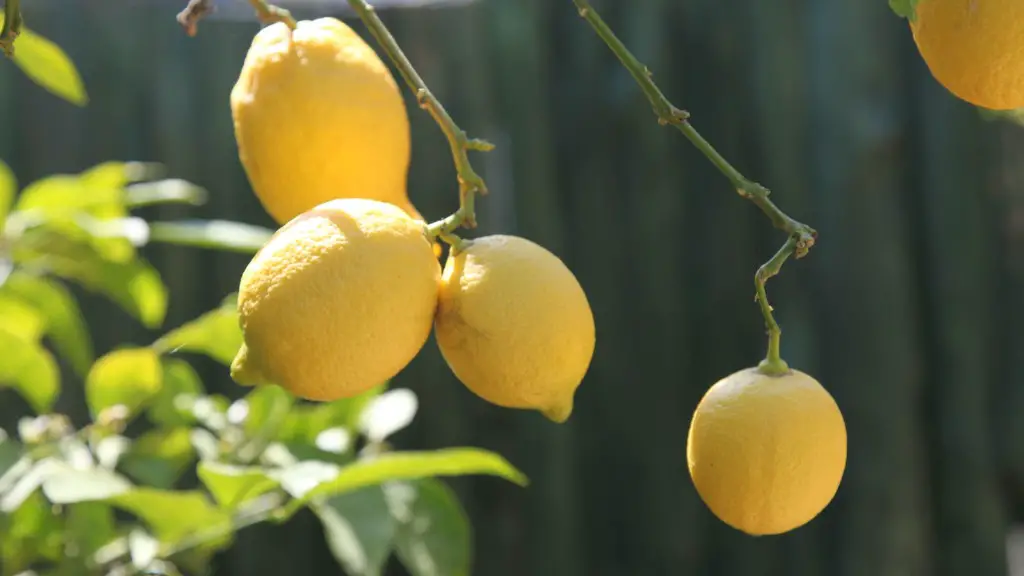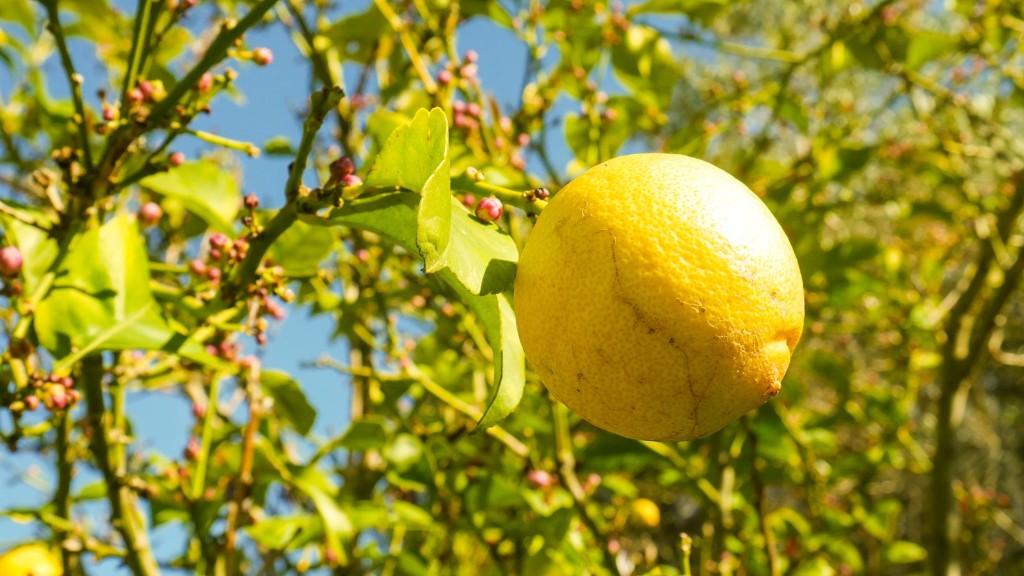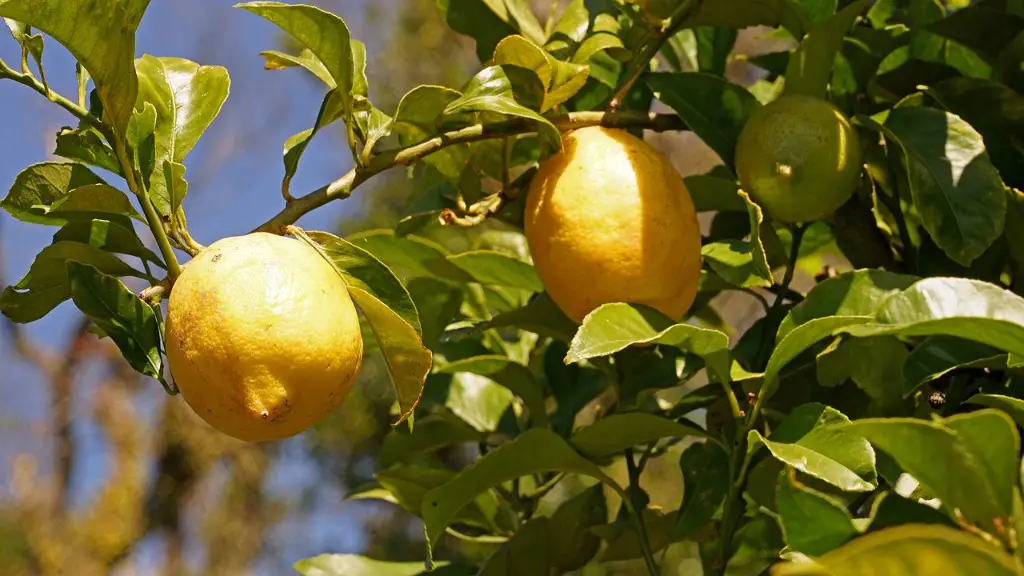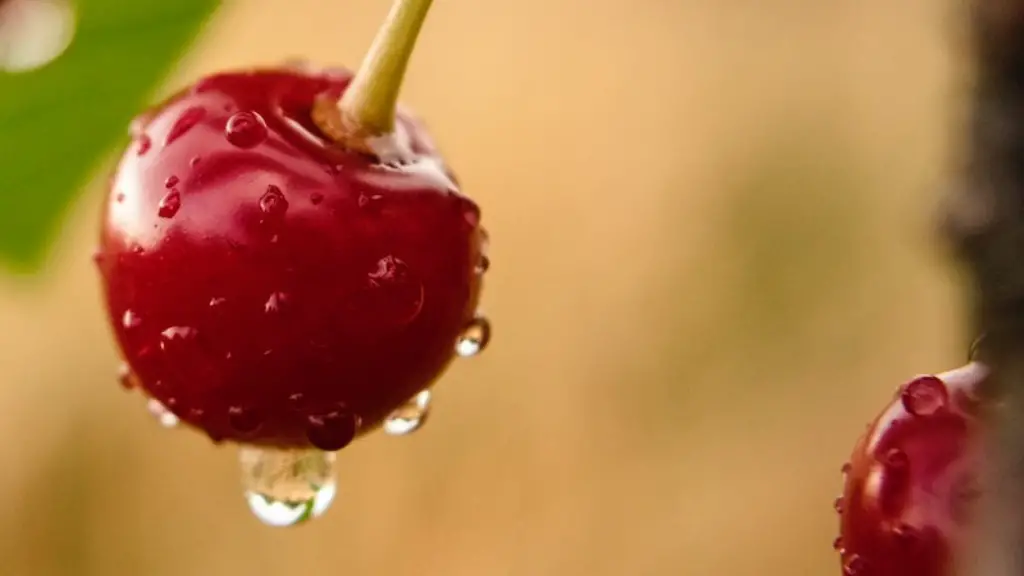If you’re wondering how to get more lemon from lemon trees, then you’re in the right place. Growing and harvesting lemon trees isn’t always straightforward, but with the right know-how, you can get the most out of your lemon tree and enjoy the sweet, tart fruit it produces. Here are a few tips to help you get more out of your lemon tree.
Firstly, make sure your lemon tree is planted in a sunny and sheltered spot. Setting your tree up for success is essential for optimal production and maintaining colour and size. The ideal temperature for a lemon tree ranges from 12℃ to 30℃, and its soil should be well-drained and slightly acidic.
Secondly,Once your lemon tree is established, it’s important to water it frequently and evenly. Lemon trees don’t like their soil to be too wet, as this can cause root rot, so adjust your watering schedule depending on the season and what kind of tree you have. It’s also important to make sure your lemon tree gets enough fertiliser, as this will promote healthy and abundant fruit production.
Thirdly, pruning and trimming your tree can also ensure a healthy harvest. Pruning needs to be done twice a year – in the winter before the flowering season begins and in the summer after the flowering season ends. Pruning encourages new growth and will help you get bigger and juicier lemons.
Fourthly, another way to get more lemon from your tree is to remove any damaged or diseased fruit, as well as any lemons that are of a smaller size. This will help to avoid wasting energy from the tree and help protect the health of the existing lemons. It will also prevent diseases from spreading and ensure optimal growth and amount of fruit.
Lastly, it is best to harvest lemons when they are ripe, which is usually when their skin starts to turn yellow. When you harvest most of the lemons, the remaining lemons will grow bigger and juicier, so it’s a good idea to leave a few behind so you can get more out of your tree.
Different types of lemons
When it comes to getting more lemon from lemon trees, understanding different varieties of lemons can be helpful. Some types of lemons are more productive than others and can yield larger, juicier fruits. As a rule of thumb, Meyer lemons tend to produce a higher yield than regular varieties, and so do limes. Key limes, for example, are known for their tart and citrusy flavour, and they produce a great harvest.
As well as different varieties of lemons, different regions also vary in terms of harvest and yield. For example, in locations with cooler climates, such as Northern Europe, the harvest can be slightly smaller and the production cycle is extended. That’s why it’s important to do your research and learn more about the specific climate needs of the different types of lemons before you start to grow them.
Another factor to consider is disease and pest prevention, as these can significantly affect lemon trees. Regular pest and disease checks should be carried out to avoid any damages or major reductions in your crop. Simple solutions like spraying a soap spray solution on the leaves and branches can help get rid of pests, and organic pesticides can help keep your lemon tree’s health in check.
Finally, one of the most important tips for getting more lemon from lemon trees is to be patient. Depending on your chosen variety, the fruits may take some time to mature, and so it’s essential to give your tree plenty of time to produce a good harvest.
Ripe fruit selection
Selecting the right type of lemon for the right season is one of the best techniques to ensure you get a great harvest. When lemons are ripe, they should be picked off the tree at the right time to get maximum yield. Generally, ripe fruit will be yellow in colour and will have a nice texture.
It’s also important to check the skin of the fruit to make sure it’s not soft or squishy. If it is, this indicates that it might be overripe and isn’t ideal for harvesting. On the other hand, if the lemon skin feels quite hard and is still quite green, then this indicates that it’s not yet ripe enough and should be left a little longer on the tree.
To get the most out of your harvest, using a pair of clippers can help you clip the fruit off the tree without damaging the branches. Once the lemon has been harvested, it should be stored in a cool, dark place for no more than three days.
Preserving lemons
If you have too many lemons from your harvest than you can use quickly, it’s possible to preserve them for later use. Storing them in the fridge is the simplest option, but they’ll only last a few days. For the most part, the longer they sit unused, the more nutrients they will lose.
A better option might be freezing lemons. This can help preserve their flavour and nutrition, as freezing will help keep their nutrients intact. To freeze lemons, simply wash and dry them, then cut them into wedges or slices. Place the lemon wedges or slices on a baking sheet lined with parchment paper, and freeze them for several hours. Once they’re frozen, they can be stored in an airtight container or bag in the freezer.
Another option is to make lemon juice or lemon simple syrup. Both options can help preserve the lemons for longer, and the lemon juice or syrup can be used for drinks, dressings, and sauces, and added to baked goods. Making lemon juice is as easy as squeezing the lemons and straining the juice.
Lemon simple syrup is another great way to use up extra lemons. To make it, you’ll need to heat a pot of equal parts water and sugar until it reaches a simmer. Once it starts to simmer, add some lemon zest and fresh lemon juice and stir until the sugar has dissolved. Allow the syrup to cool completely before transferring it to a covered container and placing it in the fridge.
Farming tips
Farming lemon trees is a rewarding experience, but it’s not always easy. To get the most out of your lemon tree and ensure a good harvest, here are a few tips to keep in mind. Firstly, make sure to check soil pH. A slightly acidic soil is often ideal for lemons, so make sure to adjust the pH if necessary.
Secondly, pay close attention to your tree throughout the year and watch out for signs of pests or disease. Diseases can easily spread from tree to tree, and even from branch to branch, so it’s important to regularly inspect your tree for any signs of decline.
Thirdly, make sure to provide good drainage. If your tree is getting enough water and the soil isn’t draining well, this can cause waterlogged roots which can be catastrophic for your tree’s health. That’s why it’s important to make sure your soil is well-drained, or use a raised bed to avoid complications.
Finally, Don’t forget about pruning. Trimming your tree helps it grow and breathe, allowing it to produce abundant yields. This can often also reveal new, healthy growth and can even reveal branches with more flowers, which will in turn bring more lemons.
Protecting the tree
Protecting your lemon tree is essential for healthy production and a good harvest. It’s important to keep an eye for pests and diseases, and to act swiftly if you notice any signs. If you find any, make sure to remove any affected parts of the tree and dispose of them responsibly.
Installing a netted box around your tree is a great way to protect it from birds and other wildlife that might otherwise feed on your crop. Netting can also prevent wind damage, and shelter your tree from potential fungal diseases.
Another way to protect your tree is to maintain good air flow. Pruning or trimming to guarantee good air circulation can help prevent fungal diseases, as well as ensure optimal photosynthesis and help your tree bear healthy fruit.
It can also be helpful to add mulch around the base of the tree. Mulch is a great way to lock in moisture and help keep roots cool during the hot summer months.
Finally, make sure to keep pests and diseases at bay by providing your tree with the essential nutrients it needs. Fertilising the soil a few times a year helps to keep your tree healthy and promote fruit production.





